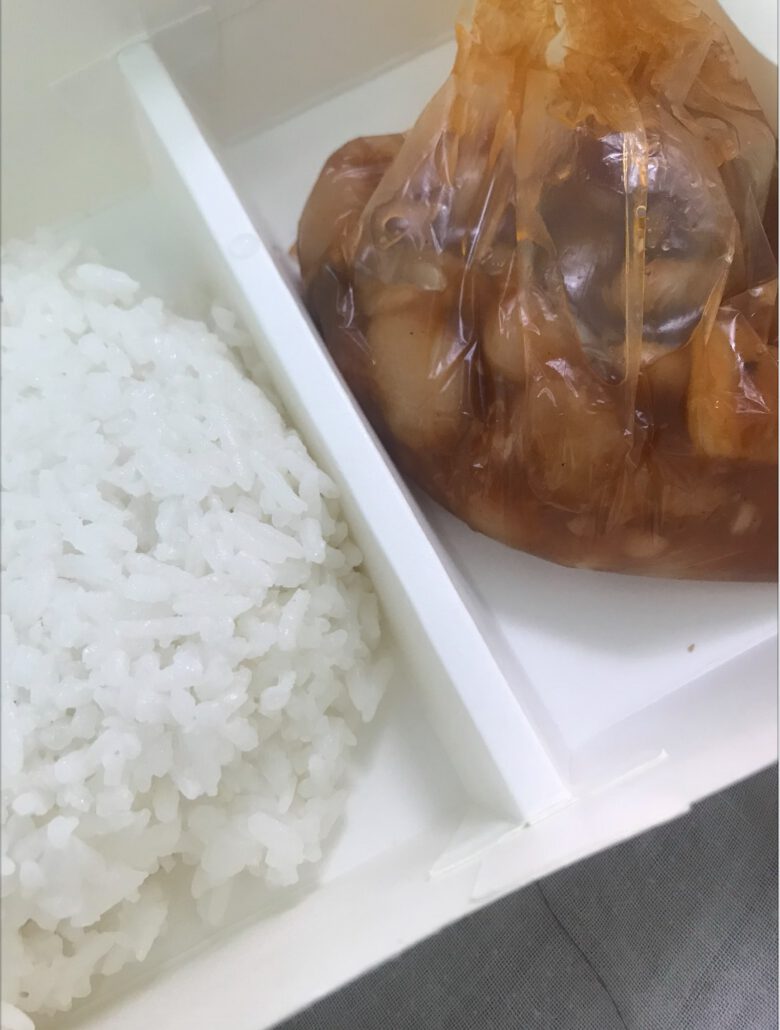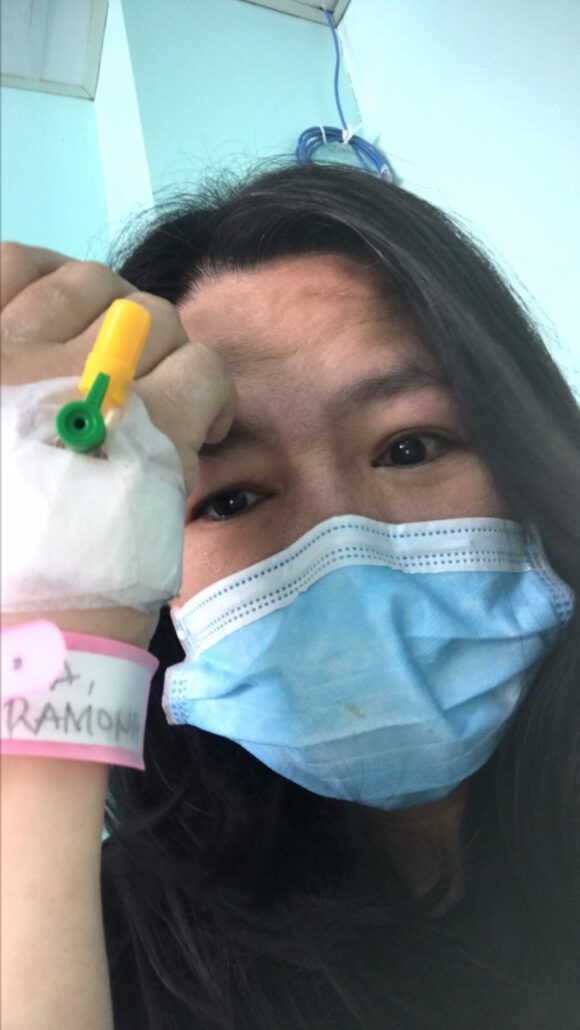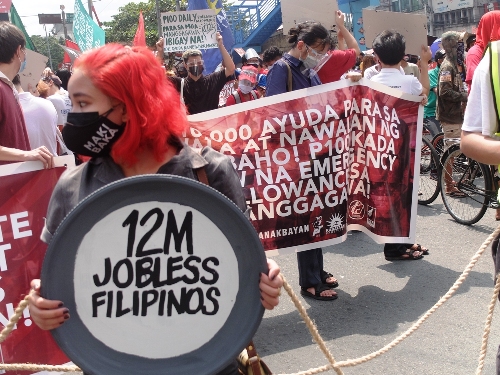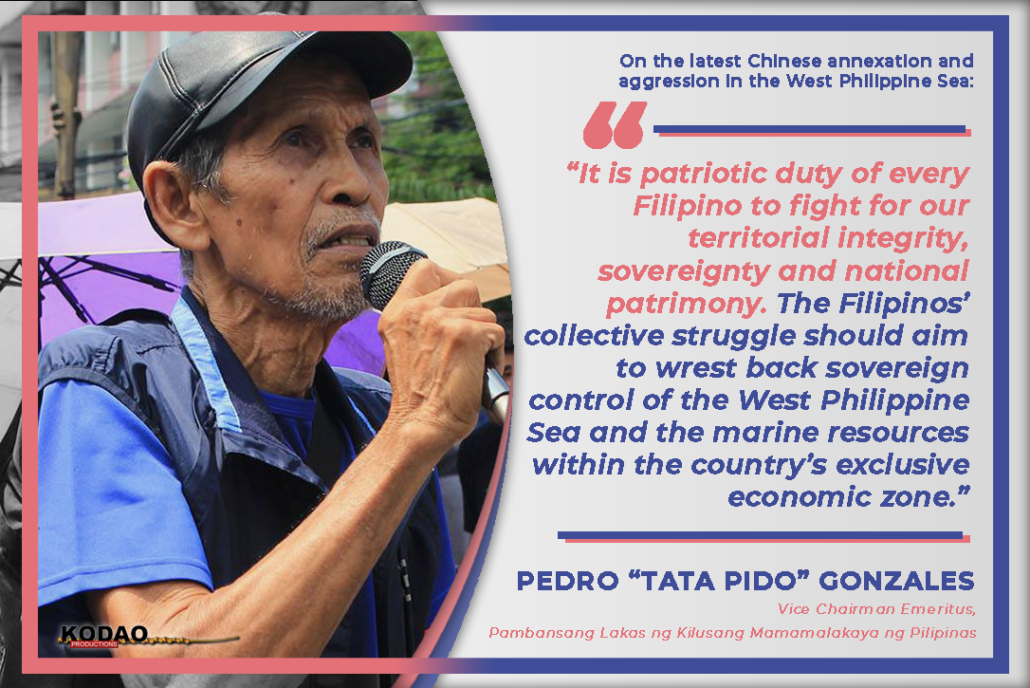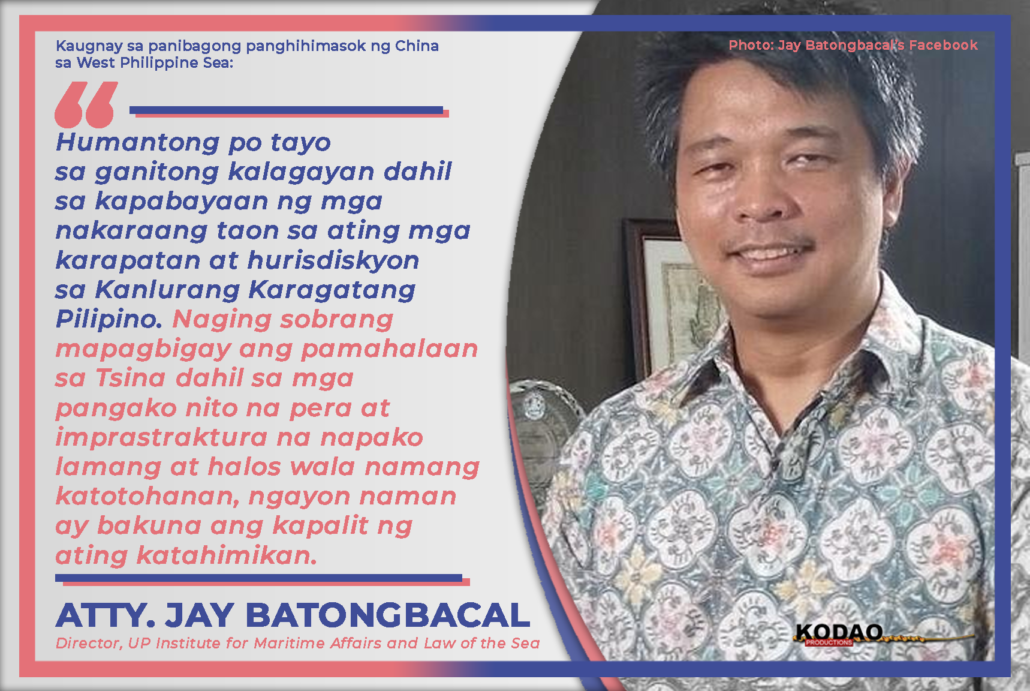‘Tenacious and determined’ NPA frustrates Duterte’s all-out war
CPP congratulates Red Fighters on 53rd anniversary
The Rodrigo Duterte government has failed to crush the New People’s Army (NPA) despite vowing to do so before its term ends, the Central Committee of the Communist Party of the Philippines (CPP) said.
In its message on the NPA’s 53rd anniversary today, the CPP said the revolutionary army has successfully frustrated Duterte and his military generals in their repeated declaration of crushing the people’s armed resistance.
While admitting losses due to the government’s new arsenal of weapons and strategies, the CPP said the NPA has preserved itself and has achieved victories in most guerilla fronts.
“The Red fighters and commanders of the NPA, and the Party cadres leading the NPA, have displayed great tenacity and determination to bear heavy sacrifices, surmount all adversity and limitations, and exert all efforts to defend the people against fascism and state terrorism,” the CPP said.
The underground party also said NPA fighters are willing to shun all desires for comfort and convenience as they shoulder the difficult tasks in waging the people’s war.
“They draw joy, strength and inspiration from the peasant masses who the NPA serves selflessly, and who, in turn, provides for the needs of the NPA,” it added.
The NPA is operating and has preserved its strength in all of the country’s 13 regions, the CPP said.
Bicol NPA twits Duterte
The NPA in Bicol said the Duterte government has failed to crush their armed revolution in the region.

“The advancement of the people’s war in Bikol, despite its being one of the focus of US(United States)-Duterte regime’s anti-people war, is one of the most undeniable proofs of Duterte’s failure to curb the people’s democratic revolution. The insistent mass surrender campaigns, militarization and civilian killings only pushed the Bikolanos towards revolutionary struggle,” Raymundo Buenfuerza, spokesperson of the NPA’s Romulo Jallores Command said in a statement.
“Where are Duterte’s boasts and strong promises that he can pulverize the revolutionary movement during his term? With barely over two months remaining and despite ceaseless empty declarations of surrenderees after surrenderees, encounters and whatnots, the truth that they failed came straight from none other than the tyrant himself,” Buenfuerza added.
The Bicol NPA further said is reduced to pleading and coercing NPA members into pacification as the President’s “last bid to show some success for his bragging and unrealistic declarations six years ago.”
Buenfuerza said the NPA’s continuing advance in Bicol is one of the most undeniable proofs of Duterte’s failure to curb the “people’s democratic revolution.”
More gov’t troops
The CPP revealed the Armed Forces of the Philippines (AFP) has created new combat units to try to crush the NPA, to no avail.
The group claimed that almost 60% of the AFP’s combat troops are concentrated in five of the 13 regions, namely, Southern Tagalog, Eastern Visayas, Southern Mindanao, Bicol and North Central Mindanao.
“There is a marked increase in the deployment of troops in Far South Mindanao, Negros, Southern Mindanao, Eastern Visayas, Cagayan Valley and Southern Tagalog. The AFP aims to conduct large-scale and focused military operations, coordinate its various branches and make full use of the whole range of its arsenal against the guerrilla forces of the NPA,” the CPP said.
Despite repeatedly declaring that the NPA has been weakened and is set to be crushed before the end of Duterte’s term on June 30, the AFP and PNP continues to increase its counter-guerrilla combat forces, the CPP said.
It added that there are presently 166 combat battalions of Army, Air Force, Marines, Scout Rangers, Special Action Forces and other military and police units deployed against the NPA, 21 more than the previous year.
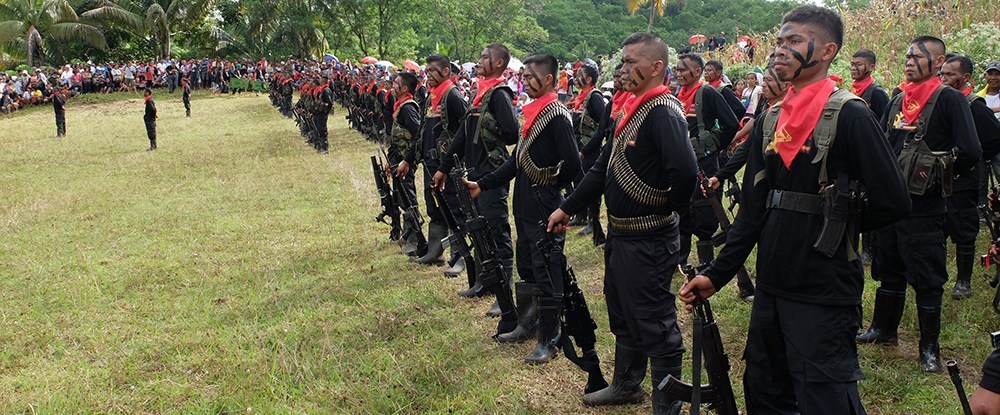
“With this number, the AFP can deploy 5 to 6 battalions against their priority or focused guerrilla sub-regional or front areas of the NPA, and deploy two to three in non-priority areas. The AFP and PNP have established joint commands and operations,” the CPP said.
“The push to achieve overwhelming military superiority, however, has the opposite effect of deepening its political inferiority,” it said.
Increased budget for the military
The CPP said the Duterte government has increasingly overspent on the military and police yet failing in its objective in crushing one of the world’s oldest Communist guerilla war.
It said Duterte’s budget for the military further increased to ₱221 billion this year from ₱217 billion last year, in addition to creating and unleashing another brutal anti-insurgency program led by the National Task Force to End Local Communist Armed Conflict (NTF-ELCAC).
The NTF-ELCAC had an increased of ₱17.5 billion in 2021 from ₱4.2 billion in the previous year, ₱10 billion of which was categorized as unallocated.
The AFP has also received a total of $1.14 billion worth of military assistance in the form of Foreign Military Financing, military training programs and others mainly from the United States of America and other foreign countries in the past six years.
The CPP said the Duterte government purchased attack and combat utility helicopters, jet fighters and attack aircraft, cannons and artillery systems, 500-lb and 250-lb bombs, rockets and missiles, drone systems, tanks, armored personnel carrier, electronic surveillance and communication equipment, rifles, bullets and many other new equipment to fight the NPA.
It has deployed GPS tracking systems, button-sized cameras to track guerrilla movement in forested areas, equipment for mobile phone surveillance in a bid to utilize new technology in fighting the guerilla NPA.
The government has also enacted a new anti-terrorism law and let the NTF-ELCAC control civilian government agencies in a “civil-military junta.”
It has also designated the CPP, the NPA as well as the National Democratic Front of the Philippines as so-called terrorist organizations.
Rampant human rights abuses
The CPP said that all the AFP and the PNP succeeded to do however are rampant human rights abuses, both in the cities and rural areas.
“In the cities, military and police agents subject unionists, community organizers, youth and women activists, as well as human rights advocates, progressive religious leaders, teachers and health workers to surveillance, harassments, arbitrary arrests and extrajudicial killings,” it said.
“The situation is even worse in the countryside, although there is gross under-reporting of incidents of military abuses and violations of human rights,” it added.
The CPP said the government enemy has erased all distinction between combatants and civilians in its “arbitrary accusation” of civilians as being communists or communist-supporters using the new anti-terror law to justify gross violations of people’s rights and freedoms.
“It lays siege on communities mobilizing large numbers of troops in night-time or early-morning raids on peasant homes such as in the Oplan Sauron in Negros, the massacre of Tumandok minorities in Capiz and the Bloody Sunday mass killing of activists in Southern Tagalog,” it said.
‘Serious setbacks’
The CPP admitted that the NPA suffered “serious setbacks,” including the loss of NPA national commander Menandro Villanueva and NPA national spokesperson Jorge Madlos in the past year.
It also admitted that some NPA units committed errors, showed internal weaknesses and committed shortcomings that “incapacitated [them] from effectively using guerrilla tactics of concentration, dispersal and shifting.”
“A few of these units have been saddled with various problems including over-concentration and self-constriction, weakness in striking the correct balance in military and political work, leading to their inability to strengthen and expand the mass base and area of operation,” the CPP said.
“Some units have been afflicted with conservatism and passivity or a mountain-stronghold mentality. In some guerrilla fronts, the enemy was able to concentrate its forces on a limited area and apply brutal tactics of suppression against the masses to build blockhouses, compel NPA units to retreat to rough terrain where supply and flow of information is difficult, and force them into a purely military situation,” it revealed.
The CPP urged all NPA units to “self-critically assess their situation, identify and overcome their weaknesses and shortcomings and surmount their limitations, in order to steadily advance from one level to another.”
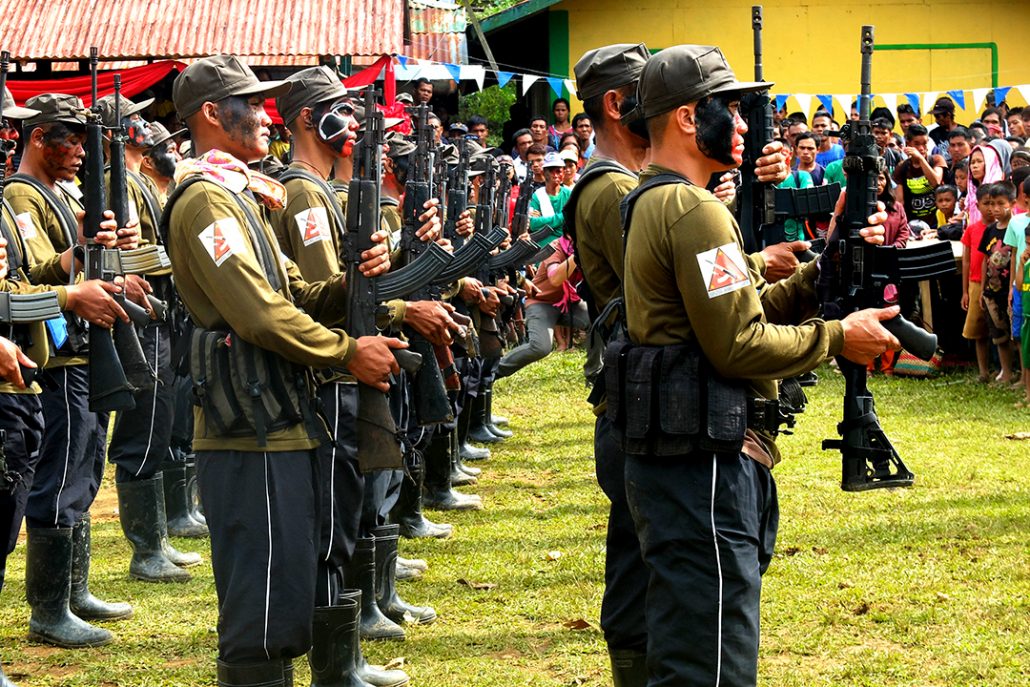
7 tasks
While showing great resilience and frustrating six years of Duterte’s offensives, the CPP said the NPA must quickly adapt to the tactics and strategy of its and carry forward the “people’s war.”
“We must creatively enhance our tactics in guerrilla warfare in order to wage extensive and intensive guerrilla warfare on an ever widening and deepening mass base. As always, the key is to arouse the broad masses of the Filipino people in order for them to rise up in great numbers against the fascist tyranny,” it said.
It added that the NPA has the following tasks in the coming years:
- Strengthen the Party’s leadership of the NPA.
- Vigorously wage armed struggle and resist the enemy’s brutal war of suppression.
- Strengthen the New People’s Army.
- Broaden and deepen the NPA mass base in the guerrilla fronts.
- Generate widespread support from the cities for the revolutionary armed struggle in the countryside.
- We must systematically proselytize among the enemy’s ranks.
- Aggressively generate international support for the New People’s Army and the Philippine revolution.
(Report by Raymund B. Villanueva)

